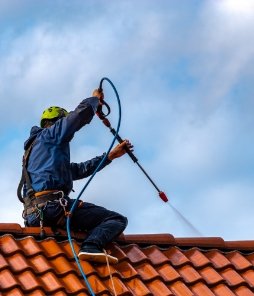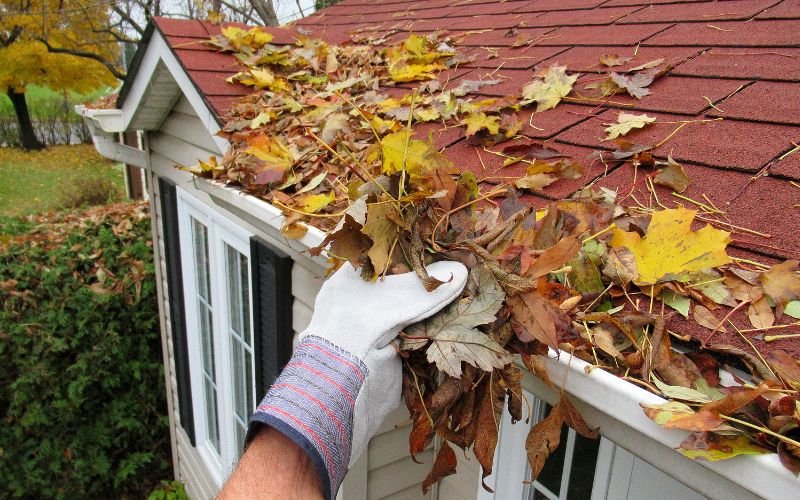
“Caring for your roof safeguards both your house and your budget.”
In Melbourne, where the weather may change from sunny to stormy in a flash, your roof and gutters are more than simply an afterthought in the design of your home. They are the heroes of your home that no one talks about. Many homeowners, nevertheless, don’t think about regular inspections until they find expensive problems. That’s why we’re going to look closely at the best roof and gutter repair checklist for homes in Melbourne.
The truth is that clogged gutters can cause leaks in the roof. Tiles that aren’t well fastened can be dangerous during storms. Flashing that was ignored? Say hello to water damage inside. Taking care of your roof and gutters isn’t just something you do once a year; it’s also a way to stop structural damage, mold-related health problems, and costly repairs.
This guide will show you how to preserve your property and make your roof last longer, no matter whether you live in any suburb.
Let’s get going.
Why Roof & Gutter Maintenance Matters in Melbourne
Melbourne’s weather is great for roof and gutter problems because it has sudden rainstorms, high gusts, and leaves falling in the fall. If you don’t take care of these systems, they can get clogged, leak, make the inside moist, and cause the roof to wear out too soon.
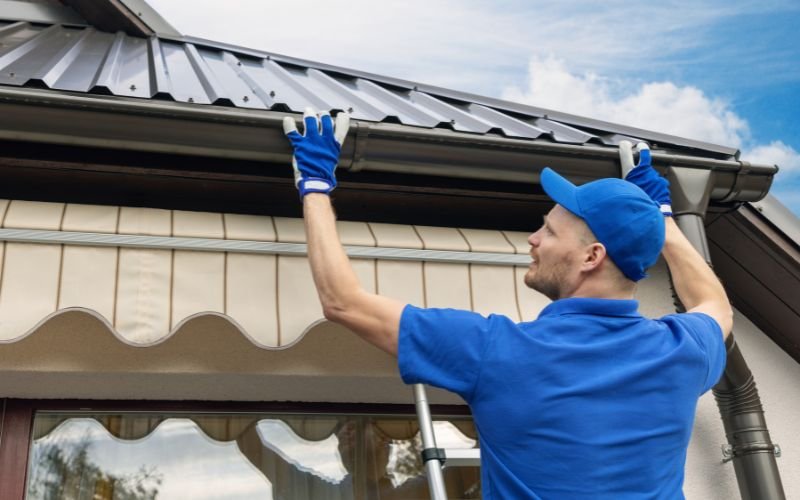
Taking care of your roof on a regular basis not only makes it appear nice, but it also saves you money in the long term. If you don’t fix small problems like blocked gutters or broken tiles, they can get worse very rapidly.
More and more people in places like Camberwell are hiring professionals to restore their roofs, especially after heavy rain and the buildup of seasonal debris.
Quick Fact: If your gutter gets clogged, it can overflow and spill more than 1,000 litres of water into your foundation during a single rain!
Seasonal Roof & Gutter Maintenance Checklist
To make things easier and more strategic, break up your roof and gutter upkeep into seasonal tasks.
Spring (September – November)
- Get rid of leaves and other organic matter from gutters and downpipes.
- Inspect for rust or movement in the brackets and connections of the gutters.
- Check for loose roof tiles or signs of animal nesting.
- Inspect the flashing and sealants surrounding the chimneys and skylights.
- Clean off any solar panels located on the roof.
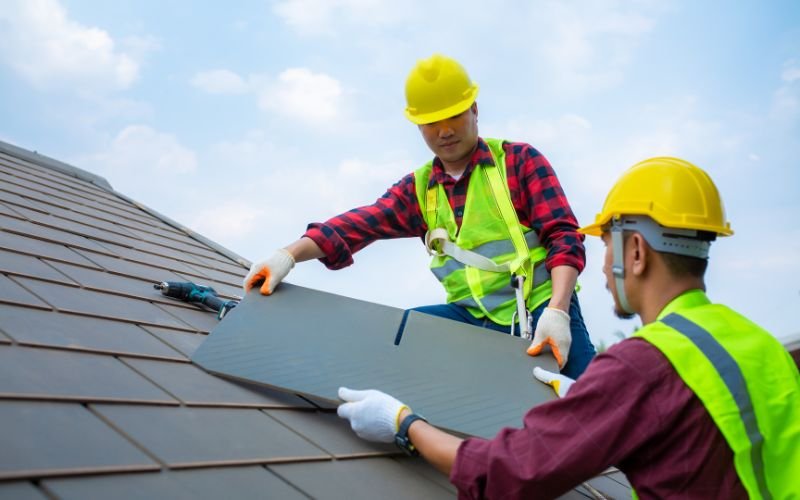
Winter (June – August)
- Ensure that water can move freely from the gutters and downpipes.
- Look at the insulation and ventilation in your roof space.
- Look for symptoms of moist spots, dampness, or mould within.
- Check the screws and other parts that hold the roof on metal roofs.
Summer (December – February)
- Cut back branches that droop over to keep debris from building up.
- Put on protective coatings or examine the paint on the roof.
- Clean the roof, especially if it has tiles on it.
- Before the storm season, check and flush out the downpipes.
Autumn (March – May)
- Set up a professional inspection.
- Remove any waste that has built up in valleys and box gutters.
- Think about installing gutter guards or cleaning it.
- Check the ridge caps, valleys, and pointing with your eyes.
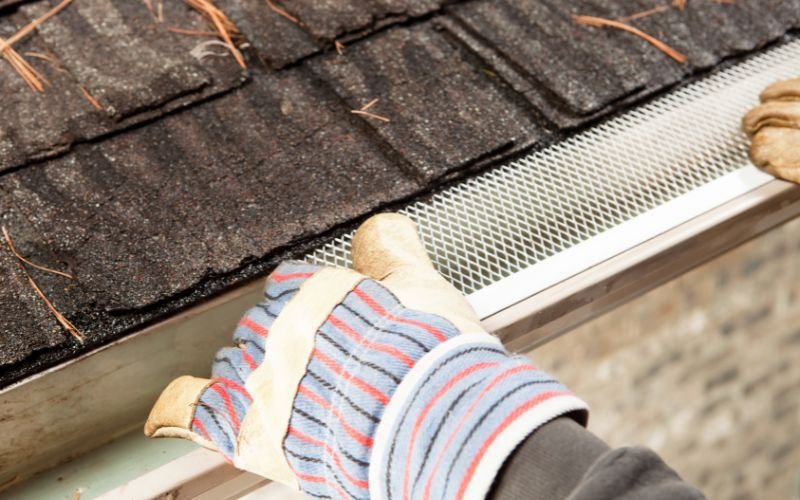
Signs Your Roof or Gutters Need Immediate Attention
Don’t wait for water to come into your living room. Here are some important signals that you need a professional:
- Gutters that are too full or drooping
- Water stains on the walls or ceilings inside
- Tiles that are cracked or missing
- Mould growing in the attic or in the corners of the ceiling
- Brackets for gutters that are rusty or loose
- Animals or bugs making nests in the roof space
If you notice any of these issues, act without delay. Routine repairs cost much less than a comprehensive roof restoration in Croydon or any other Melbourne neighbourhood.
DIY vs Professional Roof & Gutter Maintenance
People who own homes in Melbourne often wonder, “Can I do it myself?” Yes, but…
Most people can do simple jobs like cleaning gutters or cutting branches, but a professional roof and gutter inspection might find hidden dangers. Our professionals who restore roofs in Doncaster and other suburbs employ drone technology, moisture sensors, and extensive reports that you can’t get when you do it yourself.
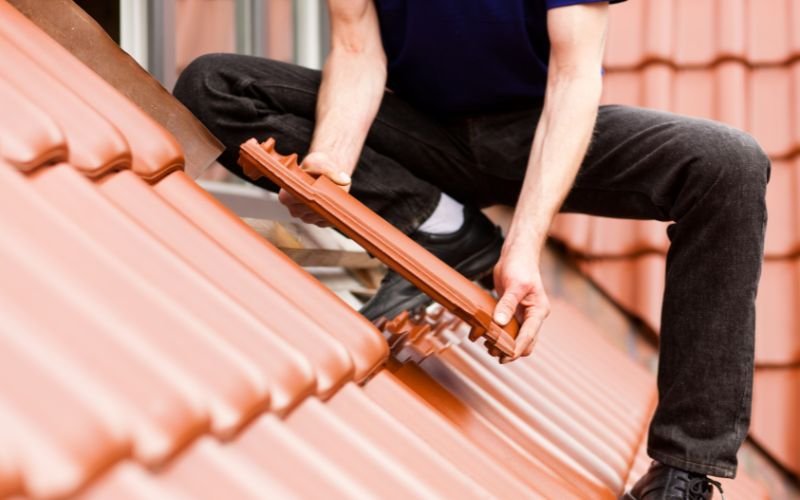
DIY Safe Tasks:
- Cleaning gutters that are easy to reach
- Taking trash out of the roof valleys
- Cutting down branches that dangle over the light
- Looking for cracks or rust spots that you can see
Call a Pro When:
- There are indicators that water has damaged things.
- You need to fix your high or pitched roofs.
- There are concerns about flashing or structural problems.
- You don’t know if the roof is safe or how to get to it.
Bonus: Pro Tips to Extend Roof & Gutter Life
- Put up gutter guards to keep leaves from building up.
- Set up roof inspections every six months
- Every five years, reseal the flashing.
- Choose roof sarking that lets air through when you repair it.
- To keep them from getting worse, repaint tiled roofs every 10 to 15 years.
And don’t forget how important it is to act quickly. It’s not unusual for a homeowner to ignore a little leak and then have to pay for a full roof restoration a year later.
Final Thoughts: Protecting Your Home Starts at the Top
Your roof and gutters are more than just parts of the house. They are the house’s first line of defence against the unpredictable weather in Melbourne. Waiting for damage to show up could cost more money, damage the inside of your home, or even cause problems with your insurance.
This checklist is a good place to start if you’re cleaning up for spring or fixing up your roof. Make a copy. Add it to your bookmarks. Even better, make an appointment with a pro today and get ahead of problems before they happen.
You need to keep up with regular maintenance, but you don’t have to do it all by yourself. You can relax knowing that Eufouria will take care of the hard work. Call us today to set up an inspection, get an estimate, or make a personalised plan for taking care of your roof and gutters.
It’s true that prevention is better than cure, when it comes to your roof and gutters.
-
November 13,2025
Maintenance Tips for Slatted Roof Systems in Melbourne
-
October 30,2025
Colour & Style Trends for Roofing in Melbourne
-
October 7,2025
How to Prevent & Fix Flat Roof Leaks in Melbourne
-
September 29,2025
Role Of Ember Attack In Roof Ignition & How To Prevent It
-
September 16,2025
Roof Ventilation and Repairs: Why Melbourne Homes Overheat
-
August 19,2025
Roof Leak or Plumbing Leak? How to Tell the Difference in Homes
-
August 4,2025
Gutter and Roof Safety Tips Before Bushfire Season in Victoria
-
July 9,2025
Guide to Roof Tile Types in Australia and How to Repair Them
-
June 26,2025
Metal vs. Asphalt: Which Roofing Material Lasts Longer?
-
June 6,2025
Drones in Roofing: How We Inspect Roofs Safely and Quickly in Melbourne
-
May 14,2025
5 Common Roof Problems in Coastal Areas (and How to Prevent Them)
-
April 16,2025
Dealing with Gutter Blockages During Melbourne’s Rainy Season: Repair Tips & Tricks
-
March 27,2025
Tile Roof Restoration – Key Signs Your Tiled Roof Needs Attention
-
March 7,2025
How to Get Your House Ready for Roof Restoration
-
February 28,2025
Why Is Your Roof Paint Peeling? Top Causes and Solutions
-
February 10,2025
The Importance of Roof Inspections Before Buying a Home in Melbourne
-
January 15,2025
Heat-Reflective Roof Restoration Coatings Lower Energy Bills
-
January 9,2025
The Hidden Dangers of Roof Mould: How It Affects Your Home and Health
-
December 26,2024
Why Melbourne’s Summer Is the Ideal Season for Roof Restoration
-
December 17,2024
Rooftops Around the World: Comparative Analysis With Australia’s Superior Guidelines
-
November 25,2024
Why Gutter Cleaning in Melbourne is Crucial Before the Winter Season
-
October 19,2024
Common Roof Problems in Melbourne: Causes and Effective Solutions
-
September 30,2024
Roof Repair Signs: What Every Melbourne Homeowner Should Know
-
September 23,2024
Tips to Maintain and Extend the Life of Your Restored Roof in Melbourne
-
August 26,2024
The Complete Guide for Roof Inspections and Restorations
-
August 12,2024
Restoration vs. Repairs: Choose the Right One for Your Home

